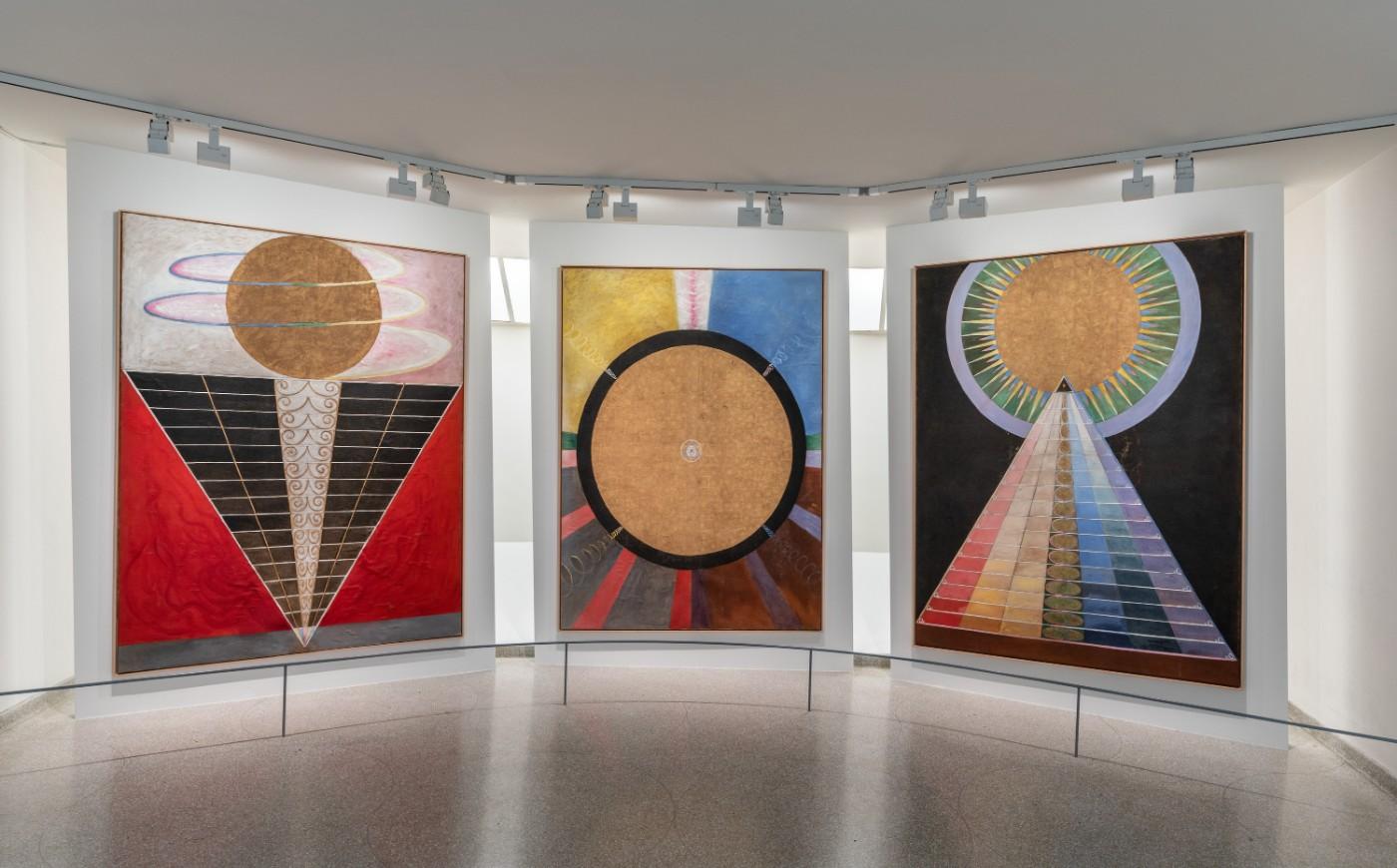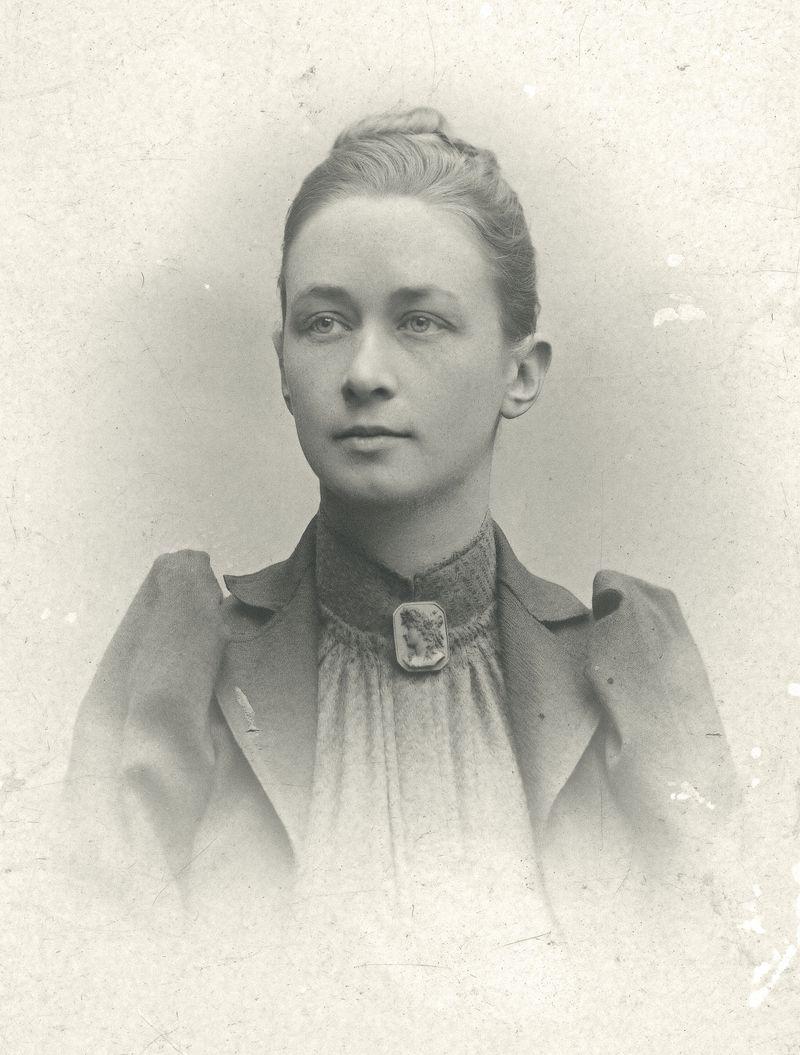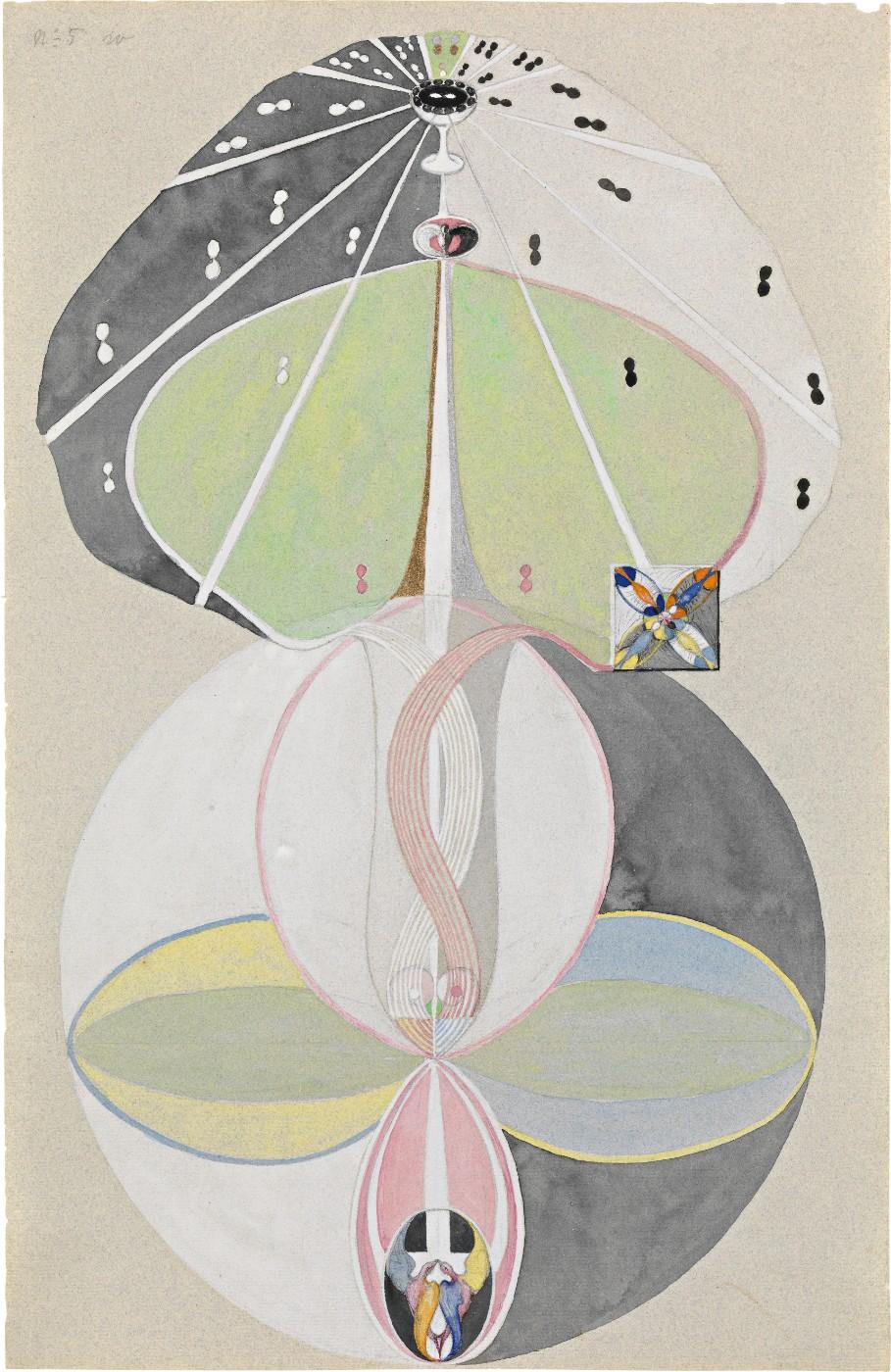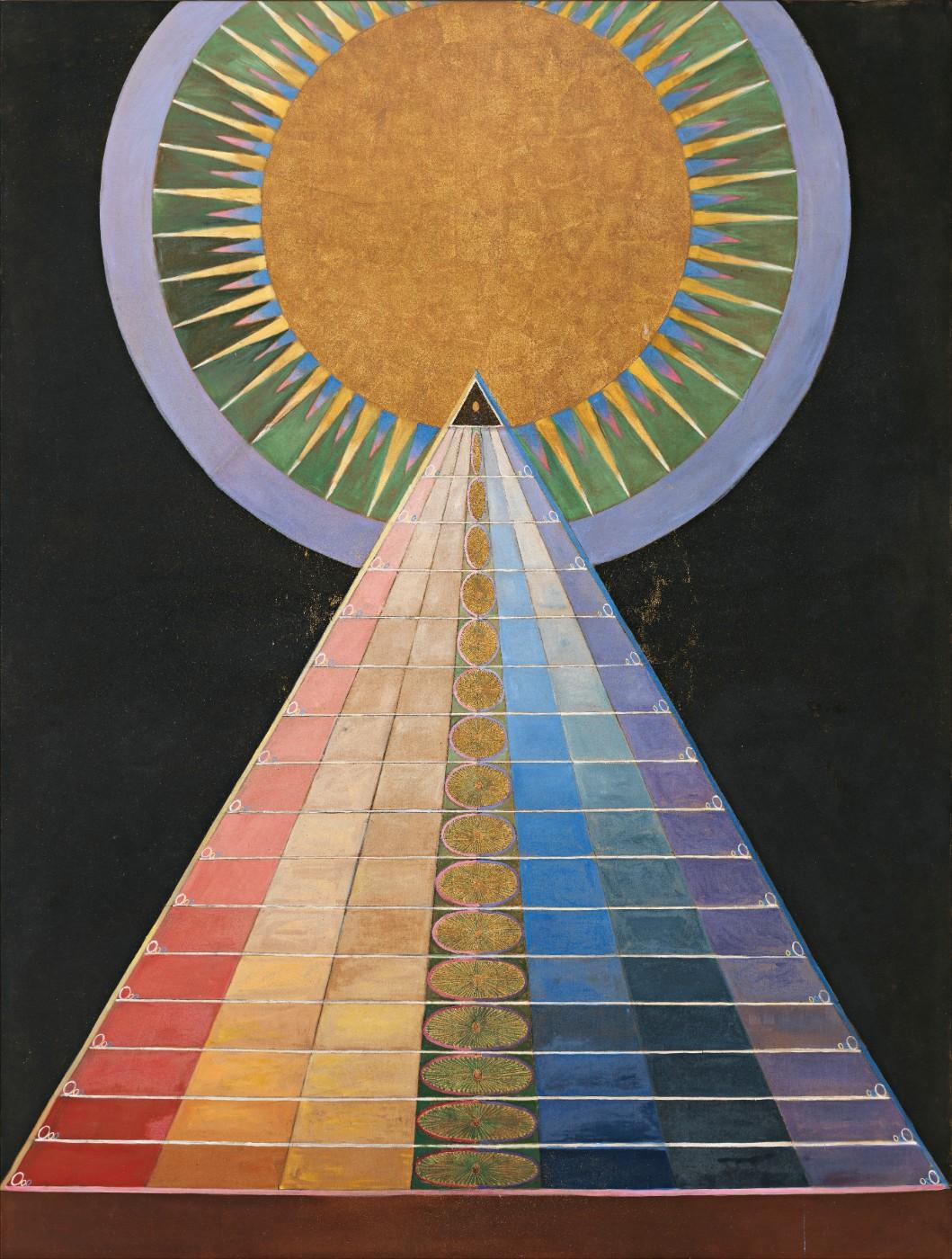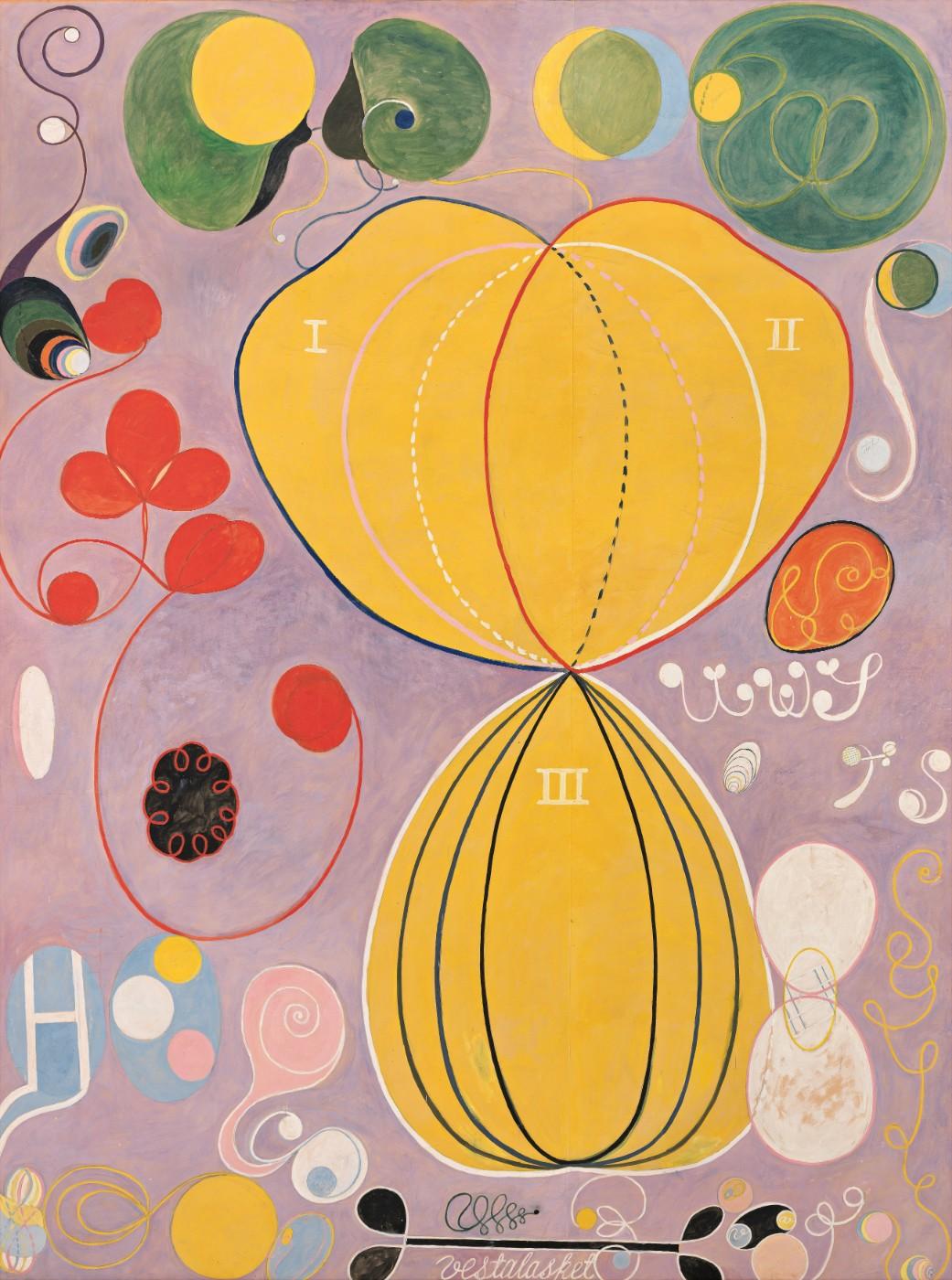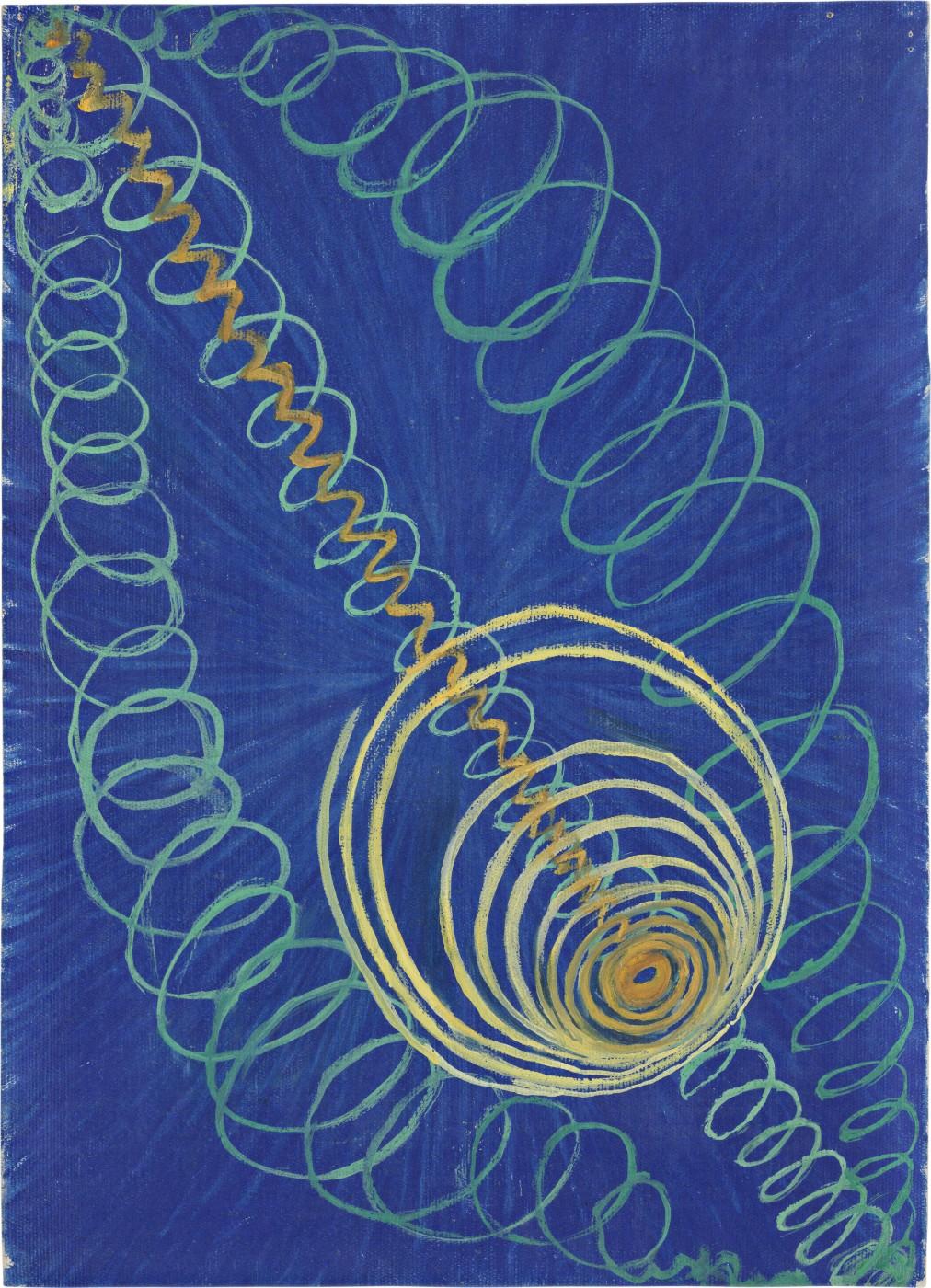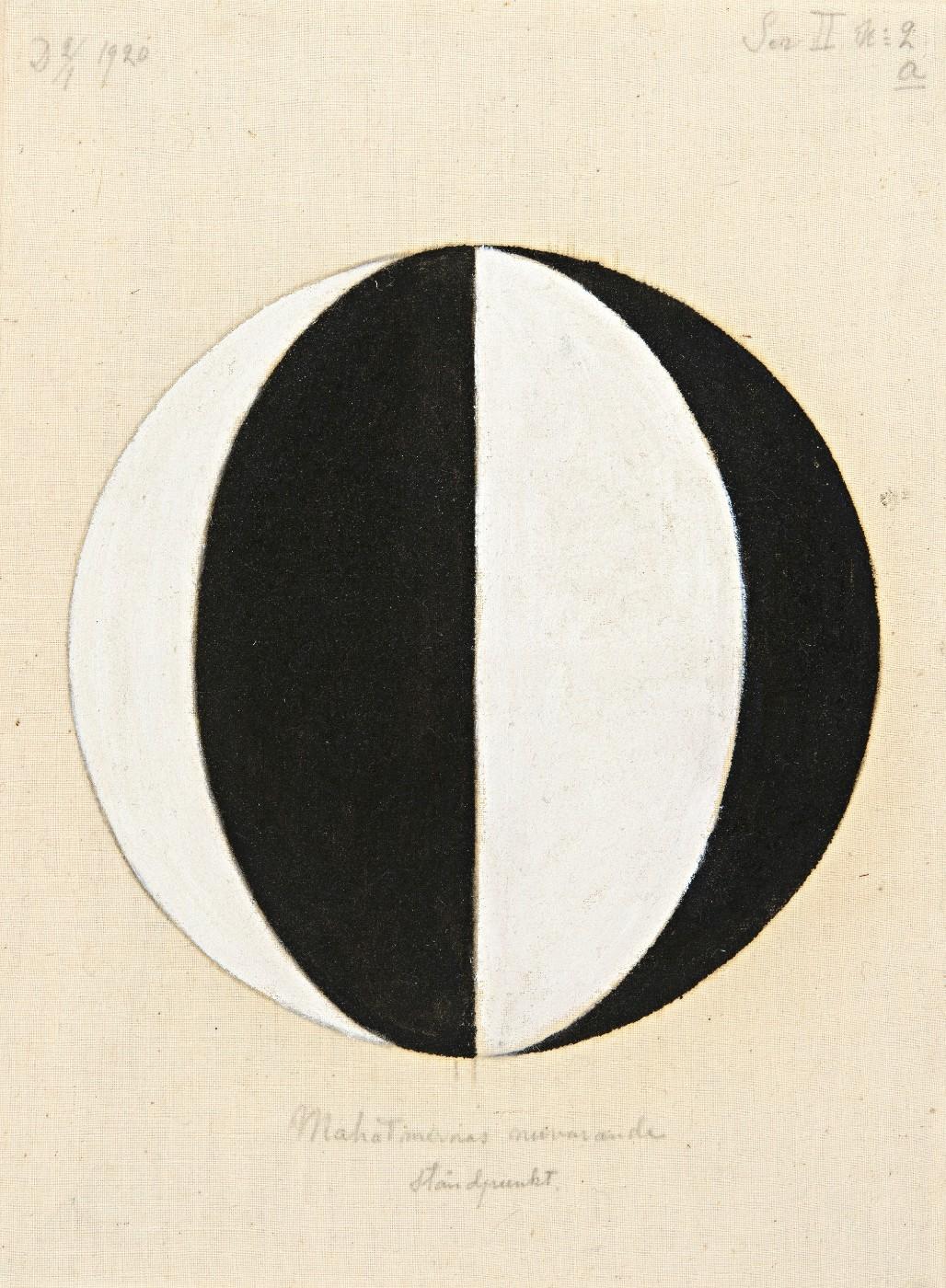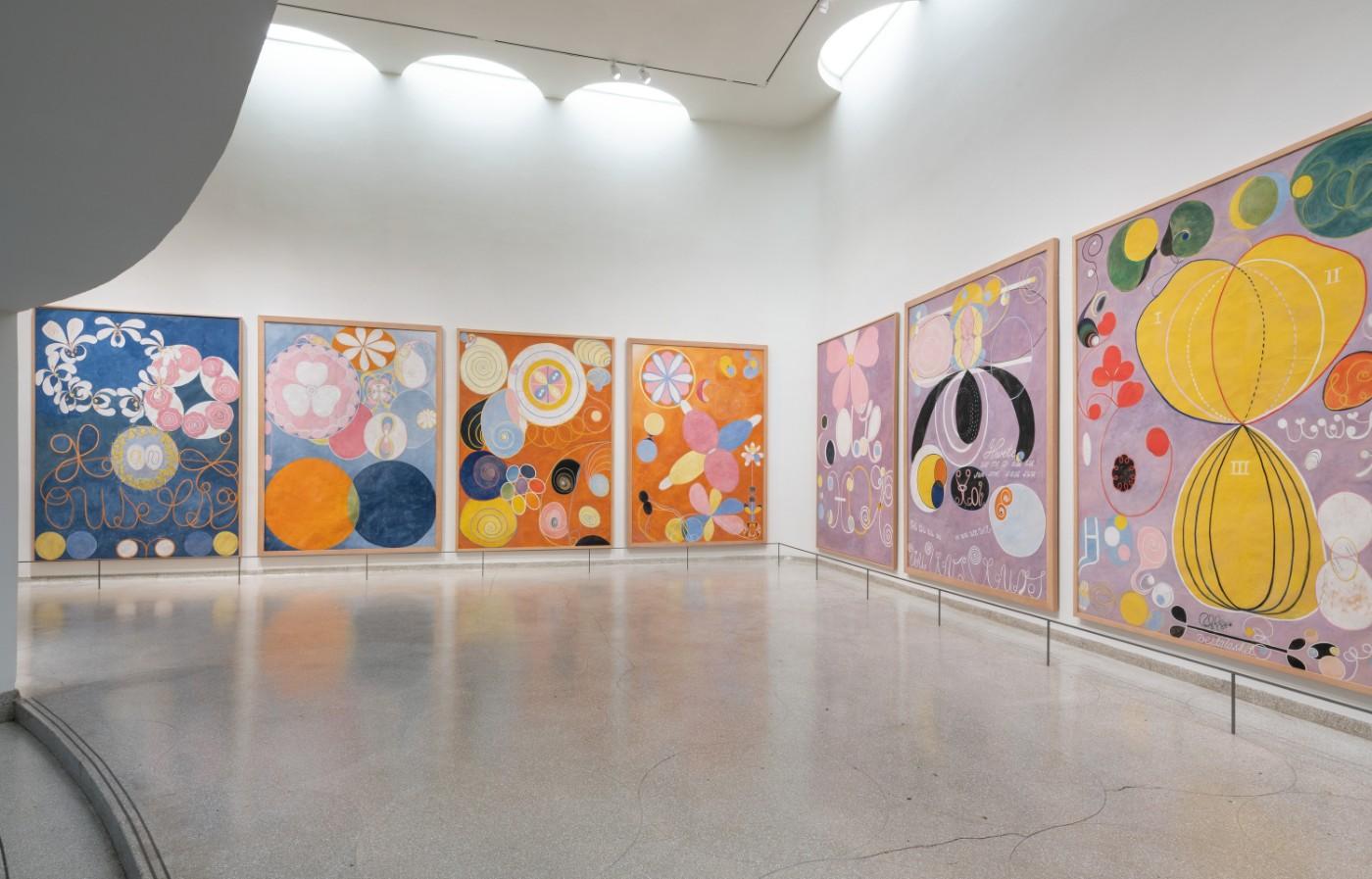Hilma af Klint painted abstract canvases before there was abstraction. Though Vasily Kandinsky is credited with painting one of the first recognized purely abstract works, af Klint’s large works, comprised of twisting shapes and large swaths of color, predate his and other contemporaries' abstract works by years. A new survey at the Guggenheim, Hilma af Klint: Paintings for the Future, asserts the artists' rightful place as a true artistic innovator and visionary.
Born in 1862 in Sweden, af Klint showed an early for talent for art and trained at the Swedish Royal Academy of Fine Arts, a rare privilege for a woman at the time. Inspired by a pastoral childhood, Af Klint had a successful professional career in botanical drawings, landscape and portrait painting, which helped to sustain her financially.
In her private life, af Klint was passionately interested in the spiritualism of the day, including the theosophy of Madame Blavatsky and the anthroposophical writings of Rudolf Steiner. In her artistic circles, af Klint formed a group of female artists who shared this interest. Calling themselves “The Five,” af Klint and her friends sought to access the spiritual realm through seances and other rituals. Af Klint used this spiritual practice and the encounters she had through it to guide her creative practice. Using autonomous drawing and painting techniques, af Klint developed a visual language to express the messages the spirits communicated to her. Beginning in 1906, she created many series of drawings and large-scale paintings, often diagrams explaining life's great mysteries and the soul. Though The Five knew of her great artistic endeavor, af Klint knew this body of work was ahead of its time, keeping this passion project largely hidden in her lifetime.




